Shuai An
Autonomous Driving in Unstructured Environments: How Far Have We Come?
Oct 10, 2024
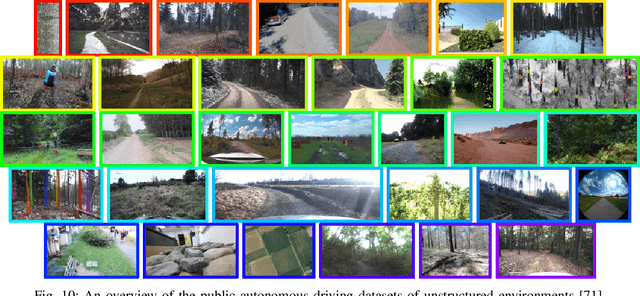
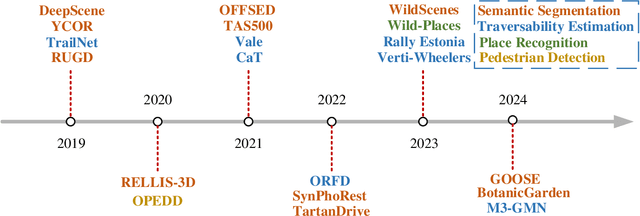
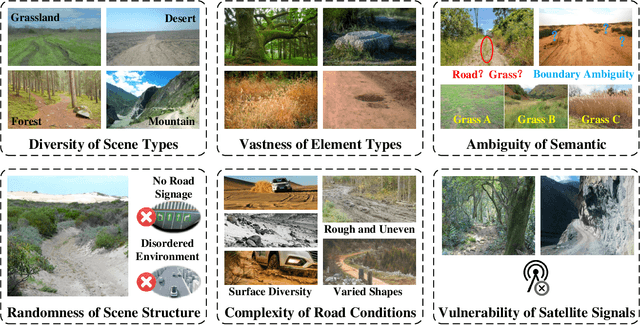
Abstract:Research on autonomous driving in unstructured outdoor environments is less advanced than in structured urban settings due to challenges like environmental diversities and scene complexity. These environments-such as rural areas and rugged terrains-pose unique obstacles that are not common in structured urban areas. Despite these difficulties, autonomous driving in unstructured outdoor environments is crucial for applications in agriculture, mining, and military operations. Our survey reviews over 250 papers for autonomous driving in unstructured outdoor environments, covering offline mapping, pose estimation, environmental perception, path planning, end-to-end autonomous driving, datasets, and relevant challenges. We also discuss emerging trends and future research directions. This review aims to consolidate knowledge and encourage further research for autonomous driving in unstructured environments. To support ongoing work, we maintain an active repository with up-to-date literature and open-source projects at: https://github.com/chaytonmin/Survey-Autonomous-Driving-in-Unstructured-Environments.
Reducing False Discoveries in Statistically-Significant Regional-Colocation Mining: A Summary of Results
Jul 01, 2024



Abstract:Given a set \emph{S} of spatial feature types, its feature instances, a study area, and a neighbor relationship, the goal is to find pairs $<$a region ($r_{g}$), a subset \emph{C} of \emph{S}$>$ such that \emph{C} is a statistically significant regional-colocation pattern in $r_{g}$. This problem is important for applications in various domains including ecology, economics, and sociology. The problem is computationally challenging due to the exponential number of regional colocation patterns and candidate regions. Previously, we proposed a miner \cite{10.1145/3557989.3566158} that finds statistically significant regional colocation patterns. However, the numerous simultaneous statistical inferences raise the risk of false discoveries (also known as the multiple comparisons problem) and carry a high computational cost. We propose a novel algorithm, namely, multiple comparisons regional colocation miner (MultComp-RCM) which uses a Bonferroni correction. Theoretical analysis, experimental evaluation, and case study results show that the proposed method reduces both the false discovery rate and computational cost.
Technique Report of CVPR 2024 PBDL Challenges
Jun 15, 2024
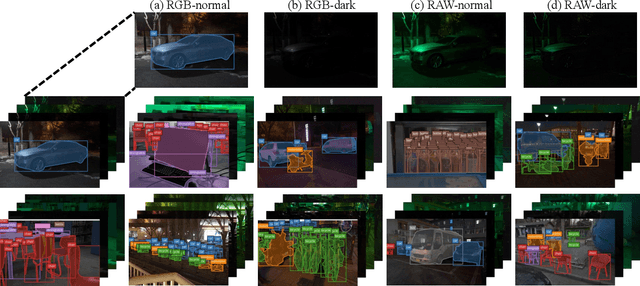
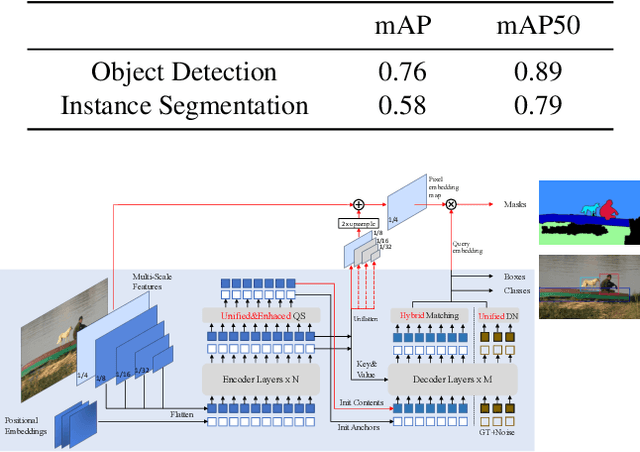

Abstract:The intersection of physics-based vision and deep learning presents an exciting frontier for advancing computer vision technologies. By leveraging the principles of physics to inform and enhance deep learning models, we can develop more robust and accurate vision systems. Physics-based vision aims to invert the processes to recover scene properties such as shape, reflectance, light distribution, and medium properties from images. In recent years, deep learning has shown promising improvements for various vision tasks, and when combined with physics-based vision, these approaches can enhance the robustness and accuracy of vision systems. This technical report summarizes the outcomes of the Physics-Based Vision Meets Deep Learning (PBDL) 2024 challenge, held in CVPR 2024 workshop. The challenge consisted of eight tracks, focusing on Low-Light Enhancement and Detection as well as High Dynamic Range (HDR) Imaging. This report details the objectives, methodologies, and results of each track, highlighting the top-performing solutions and their innovative approaches.
Reducing Uncertainty in Sea-level Rise Prediction: A Spatial-variability-aware Approach
Oct 19, 2023



Abstract:Given multi-model ensemble climate projections, the goal is to accurately and reliably predict future sea-level rise while lowering the uncertainty. This problem is important because sea-level rise affects millions of people in coastal communities and beyond due to climate change's impacts on polar ice sheets and the ocean. This problem is challenging due to spatial variability and unknowns such as possible tipping points (e.g., collapse of Greenland or West Antarctic ice-shelf), climate feedback loops (e.g., clouds, permafrost thawing), future policy decisions, and human actions. Most existing climate modeling approaches use the same set of weights globally, during either regression or deep learning to combine different climate projections. Such approaches are inadequate when different regions require different weighting schemes for accurate and reliable sea-level rise predictions. This paper proposes a zonal regression model which addresses spatial variability and model inter-dependency. Experimental results show more reliable predictions using the weights learned via this approach on a regional scale.
 Add to Chrome
Add to Chrome Add to Firefox
Add to Firefox Add to Edge
Add to Edge